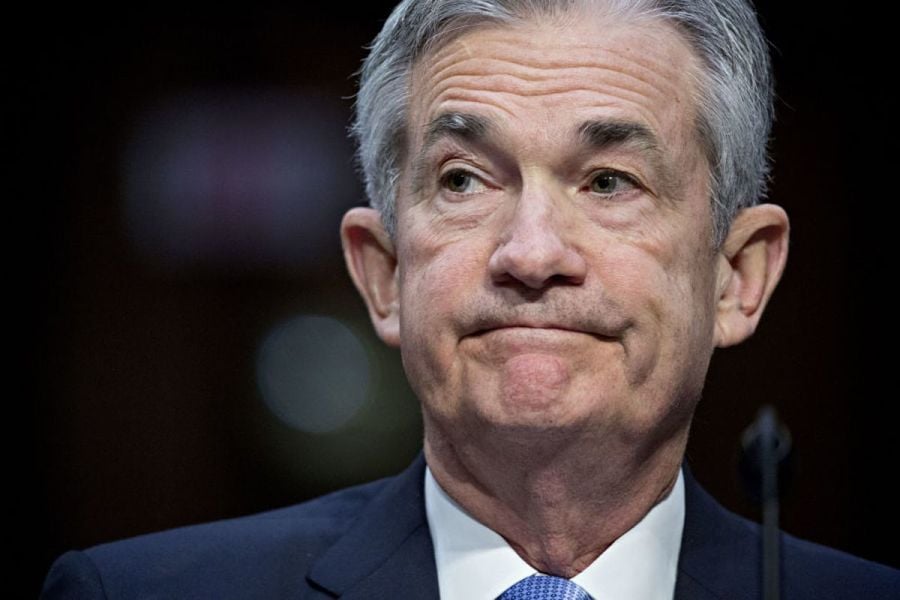

The Federal Reserve sprung no surprises today, holding interest rates steady for the fourth straight meeting as investors continued to speculate on when the central bank's first cut will occur.
The central bank kept its benchmark rate in the 5.25 percent to 5.5 percent range, a 22-year high that was reached back in July. Prior to the announcement, Bloomberg reported that investors saw roughly a 40 percent chance the Fed will lower rates in March but Wednesday's statement gave little indication this was coming.
It read: "Recent indicators suggest that economic activity has been expanding at a solid pace. Job gains have moderated since early last year but remain strong, and the unemployment rate has remained low. Inflation has eased over the past year but remains elevated.
"The Committee seeks to achieve maximum employment and inflation at the rate of 2 percent over the longer run. The Committee judges that the risks to achieving its employment and inflation goals are moving into better balance. The economic outlook is uncertain, and the Committee remains highly attentive to inflation risks."
It added: "The Committee does not expect it will be appropriate to reduce the target range until it has gained greater confidence that inflation is moving sustainably toward 2 percent."
The Fed’s preferred gauge of underlying inflation, the core PCE index, dropped to 2.9% in December, its lowest level in three years. But there appears to be little outward urgency from Fed Chair Jerome Powell to cut, given the solid economic numbers. The risk of a reacceleration in inflation is also likely to be preying on policymakers' minds.
“A cardinal sin of central banking is to cut and have to reverse course,” Diane Swonk, chief economist at KPMG, told Bloomberg. “This is the time to push back and stay the course. Markets won’t like it, but the message has been starting to sink in.”
However, Kate Yoho of TBH Advisors told InvestmentNews that while economic data aren't overheating just yet, that won’t last forever. She’s backing a cut later in the year but dismissed the theory that the Fed will wait until inflation gets to 2% before acting.
“That’s not realistic,” Yoho says, “Going from 9% to 3% is fine but going from 3% to two … that last mile, that’s always the hardest.”
She added: “We haven't seen enough economic growth and impact on inflation yet [to cut rates] but waiting until, let's say, September, might be too late. My pick is June because they'll have half a year-ish of economic data and inflation and unemployment trends and they can maybe do a little better job of projecting for the back half [of the year].”
Katrina Soelter, co-founder and co-CEO of Avise Financial, said that trying to second-guess the central bank is fraught with risk, and that the will-they-won’t-they nature of the interest-rate discussion is simply a lesson in behavioral finance.
“[This is] about staying invested, not jumping in and out based on the timing of things. It’s about making sure that you are not trying to guess what things are going to do and doing short-term trading around that," Soelter said. "What should [the Federal Reserve] do? We'll know in about 12 months what they should have done. But as for right now, what should you do? Stay invested."
Additional reporting by Josh Welsh.

A Texas-based bank selects Raymond James for a $605 million program, while an OSJ with Osaic lures a storied institution in Ohio from LPL.

The Treasury Secretary's suggestion that Trump Savings Accounts could be used as a "backdoor" drew sharp criticisms from AARP and Democratic lawmakers.

Changes in legislation or additional laws historically have created opportunities for the alternative investment marketplace to expand.

Wealth managers highlight strategies for clients trying to retire before 65 without running out of money.

Shares of the online brokerage jumped as it reported a surge in trading, counting crypto transactions, though analysts remained largely unmoved.
Orion's Tom Wilson on delivering coordinated, high-touch service in a world where returns alone no longer set you apart.
Barely a decade old, registered index-linked annuities have quickly surged in popularity, thanks to their unique blend of protection and growth potential—an appealing option for investors looking to chart a steadier course through today's choppy market waters, says Myles Lambert, Brighthouse Financial.
